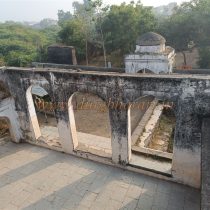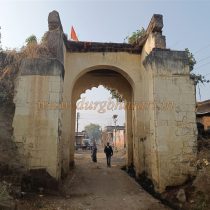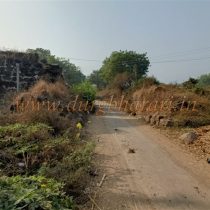FARKANDE
TYPE : CITY FORT/FORTRESS
DISTRICT : JALGAON
HEIGHT : 0
Farkande village is in Erandol taluka of Jalgaon district in Maharashtra. Even in our childhood, we have read the mention of this place in the geography books, but with time, this place goes into our oblivion. While reading the information about this place in Farkande, I read that this village is located inside Nagardurg (enclosed by ramparts) and there is a fortress in this village and one more name was added to my list to visit. It was decided to go to this village while wandering around forts in Jalgaon district. Located in Erandol taluka of Jalgaon district, this place is 50 km from Nashik-Agra highway via Parola. Erandol is at a distance of 18 km from the taluka. While entering Erandol village, one does not realize that this village is in fort, but after looking at the ramparts around it and the door to descend into the moat nearby, it is seen that the village is inside Nagardurg.
...
As tourists come here and there to see monuments at Farkande, this place is familiar to the locals and thus we can easily reach here. This monument is in the construction of a mosque and there is a wall on all four sides of this mosque. In front of the mosque there is a rampart of the fortress and this rampart has a small door leading down to the moat on the outer side. Looking at the wooden door to enter the outer wall of the mosque, the work does not seem to be very old. On entering through this door, there is a medium-sized small tank on the left and a tomb on the right. It can be seen that water is being released in this tank from the outside with the help of a stone channel. Now, as this system has been shut down, the well has dried up. The three domes at the back of the mosque and the two minarets at the front of the mosque are the hanging minarets. One of these collapsed on March 21, 1991 and the other one is still standing. The height of it is about 40 feet and these two are connected to each other by three arches. Both these minarets have small doors to enter and narrow circular steps leading up. Only one person can enter at a time. Apart from it, the windows are built to allow air and light to enter. At the upper end of the minaret there are small arches on four sides. The entire Farkande village can be seen from here. Even though this does not move today, locals say that earlier if you sit on one of them and move it, the other one would move automatically. Due to this movement of the minarets, this structure got the name “Zhulte Manore” of Farkande. According to some experts, this mosque may have been built 400 years ago during Farooqui rule, while according to some scholars, this mosque was built recently during the British period by a person named Chand Momin. Whatever is true, this building is a masterpiece of architecture. After visiting the mosque, go for a wander around Farkande village. In the central part of the village we can see the fortress on the verge on collapse. Today, only two bastions and two side walls of this fortress, which was once a bastion, remain. After seeing the fort, head out to see the rest of the fort. Farkande village is situated in ground fort. Even today, ruins of ramparts can be seen around the village. Earlier there were four gates in this fortress. One of these doors has been completely destroyed and the remaining three doors are still standing. The arches of two of these doors remain and one door is near the mosque. The arch of this door on the road is 20 feet high and the rampart around it is still intact. The fourth gate is on the main road leading out of the village and the arch of this gate may have collapsed during or before the construction of the road. The ramparts adjacent to this gate still remain and two bastions can be seen in this rampart. This rampart outside the village is completely built and lime has been used to build this structure. Looking at this overall construction, it seems to be Farooqui period. Today, although the Utawali River is visible on both sides of the village, it can be seen that earlier its water was diverted around this rampart by building a moat around it. One and a half hours is enough to walk around Farkande village. I have not read the history of Farkande village yet.
© Suresh Nimbalkar


























